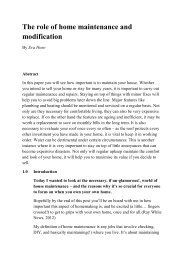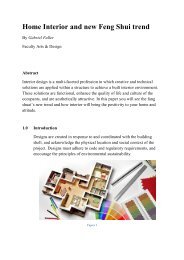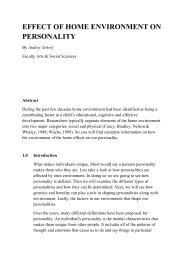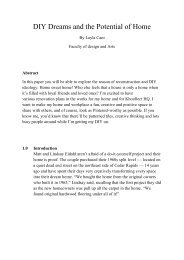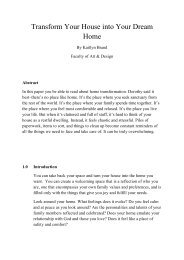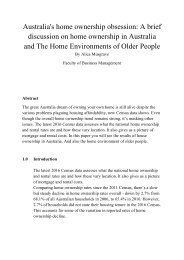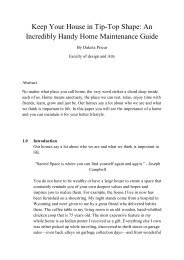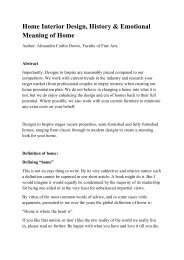Design a Smart Home Interface
Create successful ePaper yourself
Turn your PDF publications into a flip-book with our unique Google optimized e-Paper software.
ased mock-ups provide a good visual fidelity, they lack in behavioral<br />
simulation and natural interaction. Consequently, Mixed Reality (MR)<br />
environments have drawn a lot of attention in the field of UCD as they<br />
combine real and virtual worlds in various proportions and present them<br />
as a unified whole. Within the MR framework, the Augmented Reality<br />
(AR) technique is one of the most adopted one due to the low cost of the<br />
technologies and to its ability to enhance the real scene with computer<br />
graphics and emerging tactile and sound rendering displays. While there<br />
has been substantial research on the underlying technology, user<br />
experience and interaction techniques are poorly explored. In this context,<br />
the present paper describes a structured UCD approach to design highly<br />
usable control devices dedicated to manage the functionalities of smart<br />
grid platforms for home automation. The focus of the study is on the<br />
development of the graphical user interface (GUI) dedicated to desktop<br />
PCs, smart phones and other personal digital assistant devices generally<br />
used as preferred tools for software platform access and control.<br />
To improve the efficiency of the proposed UCD approach, Tangible<br />
Augmented Reality (TAR) techniques are exploited to virtually prototype<br />
the conceived design solutions and carry out usability testing with sample<br />
users. Experimental results show that designers do not require extra work<br />
to build TAR prototypes or modify solutions to meet users' explicit and<br />
implicit needs. TAR sensibility increases timesaving compared with<br />
traditional prototyping approaches. The proposed approach and TAR<br />
prototyping technique are adopted in a particular case study that is an<br />
innovative domestic smart grid platform, called <strong>Home</strong>line, to monitor and<br />
manage energy at home consumptions.<br />
The research partner is Indesit Company S.p.a, World leader<br />
manufacturer in household appliances, that developed the <strong>Home</strong>line<br />
platform.(Ceccacci, Germani, & Mengoni, 2013)<br />
2.0 The development of smart homes<br />
Through a review of existing literature on the subject, this section sets out<br />
the context to this paper: providing a working defi- nition for the term<br />
„smart home‟; identifying key infrastructure choices; and outlining the<br />
UK policy and regulatory background.




